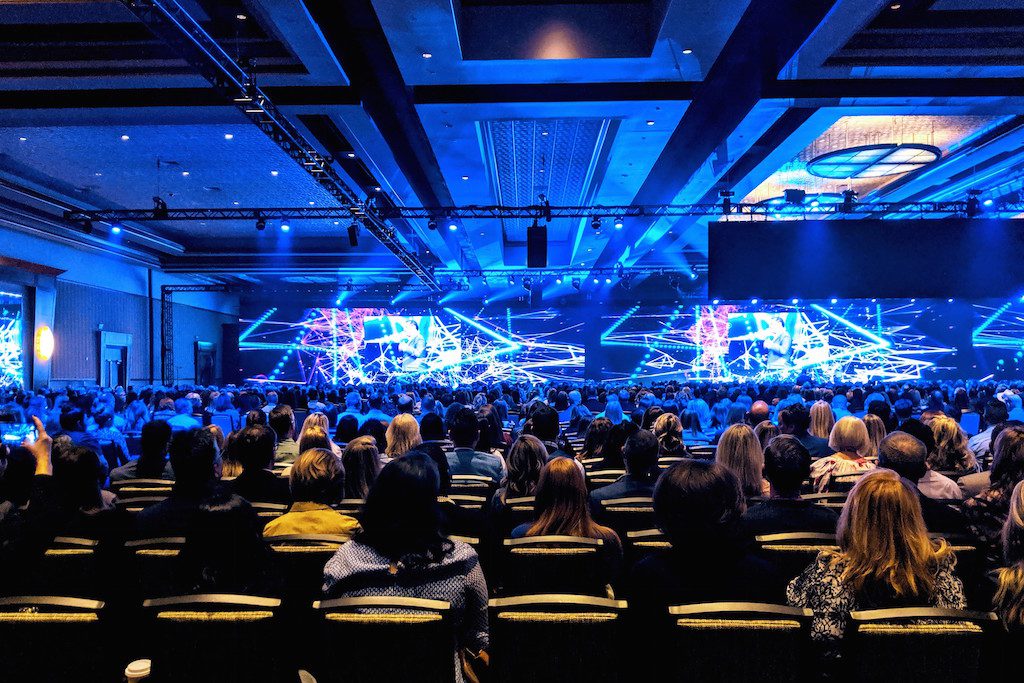Cvent Makes Progress on Improving User Experience

Skift Take
Cvent continues as the top software provider for the events industry, rapidly adding new features and making more acquisitions to add to its portfolio.
During the Cvent Connect conference in Las Vegas last week, the company showed no signs of slowing its pace. At the same time, a major focus of the event was improving user experience, something that has suffered in light of the rapid growth, as the software becomes more complicated and decentralized.
Over the past year, the company has made changing this a top priority, and it discussed future plans for progress.
“We took some time off from building new features for about a year," said Cvent Vice President of Sales Brian Ludwig. "Instead, we focused on the core stuff: simplifying the user experience, building the event website, improving registration and emails. But it’s taking us a while, because we’re talking thousands of different features.”
Cvent originally built itself up as a basic event software platform before developing new features and taking on new companies, he added, explaining why the company has become so fragmented over time.
“We built a very robust system over many, many years, so we already had this foundation. Then when we built another feature, we put it over here, off to the side, because that was the logical thing to do instead of cracking open the entire foundation.”
To this end, the company plans to merge its various app providing platforms. A month ago, Cvent acquired San Francisco-based app provider DoubleDutch in order to drive attendee engagement, bringing its number of app providers up to a whopping three, along with QuickMobile and CrowdCompass.
The company plans to combine all providers into one ideal platform sometime in the next 18 to 24 months but still needs to get more consumer input.
“Over time we're going to pool the best components of our various mobile solutions, whether its Quick Mobile, DoubleDutch, or CrowdCompass,” said Cvent Chief Technology Officer David Quattrone. “We’ll pull that into a unified Cvent mobile solution that can take all those best features, combine them together, and give the optionality and flexibility customers are looking for in their different types of events.”
That being said, each platform is slightly different, something that can make merging difficult. In large part, addressing this issue comes down to people and time. The company has a team solely dedicated to user experience working on the issue.
“We're looking at how we can get the rich functionality we have in a way that's more self serviceable, so you don't necessarily need to be as up to speed on how to use it or trained on it,” said Quattrone.
Tech To Drive Engagement
Somewhat ironically, part of Cvent’s strategy to improve user experience is by adding yet another feature. At Cvent Connect last week, the company revealed Cvent Community, an online space allowing Cvent users to interact with one another, providing tips, recommendations, and support.
“We're not only using this software to help customers better use the system and understand it. We're putting this community together so that customers can also interact with each other and talk about best practices and how to get the most out of the platform,” Quattrone explained.
Basically, other users can act as on-the-spot assistants for consumers who are confused or looking for advice. Users can also submit and vote on ideas for future Cvent services.
This provides the company with user feedback on particular “pain points,” a phrase the company uses to refer to stubborn challenges.
“Look for that pain point so you can give them an aspirin," said Quattrone, quoting a phrase used by Cvent CEO Reggie Aggarwal. "Customers giving us their feedback is helpful."
The company also underlined its commitment to emerging technology by revealing Social Tables, a feature which uses augmented reality to help meeting planners manage the event space.
The service allows hotels and venues on the Cvent Supplier Network to feature interactive floor plans for any spaces in their properties, making it easier for planners to thoroughly explore a space before booking it. In the past, Social Tables was only provided to venues rather than event planners, Quattrone said.
"It's another engagement tool," he explained. "The feature allows the planner to have a canvas. They can demonstrate to the venue what they're looking for, and go back and forth on those floor plans."
All this aside, one of the main challenges the company faces remains the fact that many businesses vastly underestimate the amount they spend yearly on events, leading them to believe that meetings and events are not a priority.
“It’s the last bastion of unbridled spend,” commented CEO Aggarwal. “I’m shocked at how organizations spend so much money on something, and yet it’s unmanaged and doesn’t give a good experience to customers.”
But everything has an upside. The cluelessness of some organizations gives the company plenty of room for more growth in coming years.




